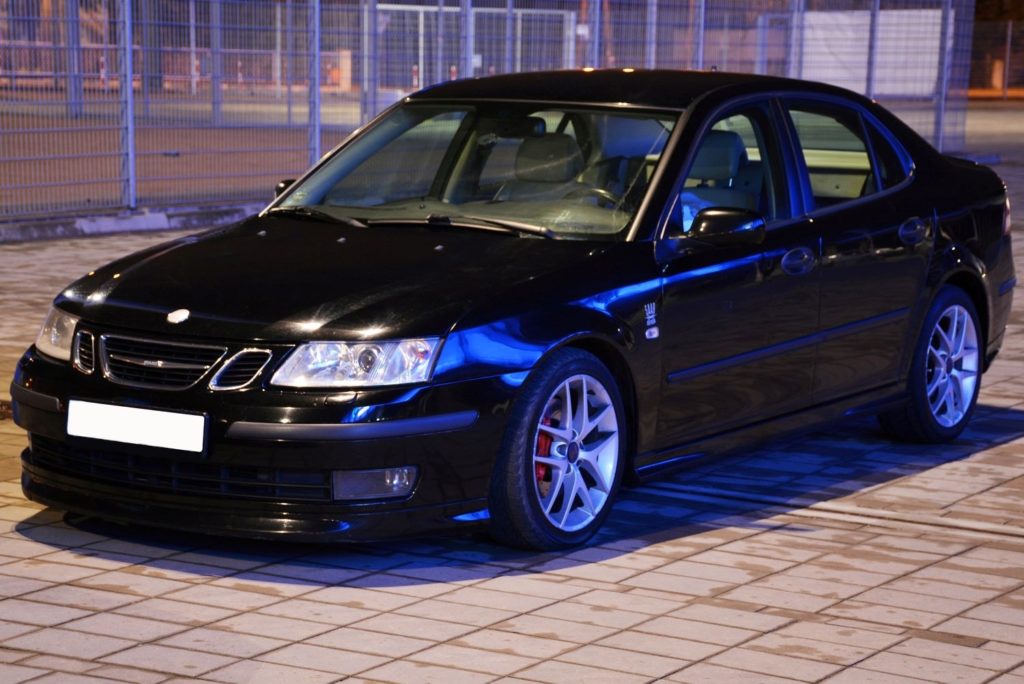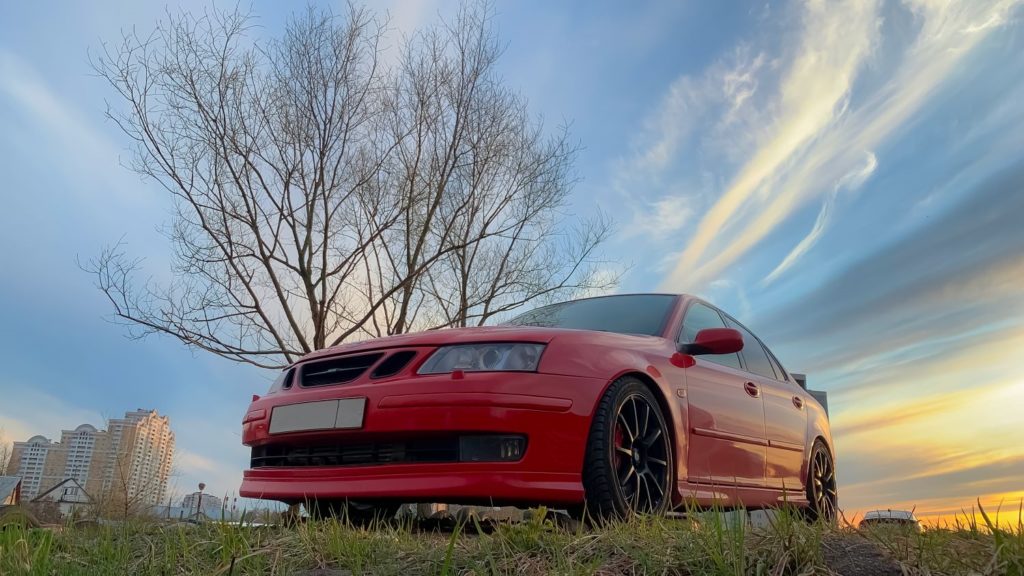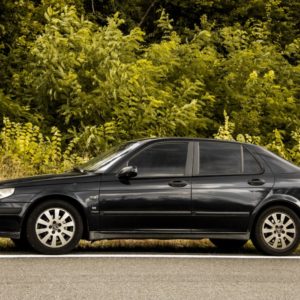The Saab name remains alive and well with one of its best-selling sedans, the 9-3. This model had a solid run from 1998 to 2011, with many praising the car’s mix of comfort, style, and driver assistance features like the night panel button, which reduces eye strain when driving at night. You may be able to get your hands on a used 2011 Saab 9-3 at a good price. It holds its value well over time, only depreciating by 7% after five years, according to AutoPadre.
How Reliable Is the Saab 9-3?
Users on RepairPal have given the Saab 9-3 an above-average reliability rating of 4.0 out of 5.0. That’s quite an endorsement, considering the annual cost of repairs and maintenance on used 9-3s can amount to $526. However, if you’re willing to spend that much on a used Saab 9-3, you’ll be rewarded with tight steering, great mileage, and a punchy turbocharged engine. With regular maintenance, a used 2011 Saab 9-3 Sports Sedan can easily achieve 24 city/highway MPG.
In addition to tight steering, you can expect a responsive all-wheel-drive system, supportive front seats, and various styles to choose from. These are some of the reasons the Saab 9-3 is considered a reliable model.

Common Saab 9-3 Problems
Despite its high reliability rating, the Saab 9-3 has its fair share of problems depending on the model year. Here are some of the most widely reported problems for the Saab 9-3.
ABS or Traction Control Light Illuminate Due to Corroded Wiring
The anti-lock brake system (ABS) is a safety feature that prevents wheel lockup during hard braking situations. It uses multiple sensors to determine wheel speed when braking and applies the appropriate amount of brake to a locked wheel to prevent the vehicle from skidding. The traction control light is another safety feature designed to keep a vehicle’s wheels engaged. When a vehicle starts to lose control, the ABS and traction control work together to steer the vehicle in the right direction. Both components share the same module in your Saab 9-3.
Many owners have reported persistent ABS and traction control light problems concerning second generation Saab 9-3s from 2002 to 2011 (with the exception of the 2009 model year). Corroded wire harness connectors in the front wheel sensors could be the source of this problem. If your wire harness connectors become dirty or damaged, the traction control module won’t be able to detect your wheel speed accurately in order to keep your vehicle grounded. ABS and traction control failure on the Saab 9-3 can lead to a complete loss of control on slippery or uneven roads. Both parts must be replaced in order to restore your Saab 9-3’s braking system. You may need to take your car to the shop for a thorough inspection of your wiring and ABS/traction control module.
Engine Coolant Loss
Engine coolant loss is a common problem that affects most Saab 9-3s (1999 to 2010). The porous engine block of the Saab 9-3 is the source of its low coolant levels, according to RepairPal technicians. An engine’s porosity is the result of gas and contaminants present during the casting process. Honda, Chrysler, and GM all have similar problems with their casting process. The Saab 9-3 is unfortunately affected by this problem. Some owners have tried replacing their head gaskets and water pumps in an attempt to fix their 9-3’s low coolant issues. However, only a handful succeeded in restoring their engine and coolant systems.
If you’re experiencing the same coolant issues, you should get your engine block inspected. A mechanic can suggest the best course of action. In some cases, a sealant or epoxy compound can be applied to the holes of the engine block to stop the leak. If the part is beyond repair, an engine block replacement may be necessary,
Loud Noises When Driving on Rough Road
Each aspect of the second-generation Saab 9-3 (2002 to 2011) was built around the front-wheel drive (FWD). This greatly improved the car’s steering and wheel traction, but it also put a strain on the car’s front suspension. As a result, the top mounts and bearings on the Saab 9-3 typically fail at around 35,000 to 185,000 miles. When these parts wear out, you may hear a grinding or clunking noise when turning or hitting potholes. RepairPal technicians believe this is caused by water damage.
If your Saab 9-3 has more than 100,000 miles on it, you should consider replacing the entire suspension assembly, because the struts, springs, and bearings are all worn out. Good thing there are plenty of inexpensive suspension components on the aftermarket. Just make sure to consult your mechanic before buying new parts.

Engine Dies While Driving
Many owners have complained about engine failure caused by a faulty direct ignition cassette (DIC). Saab vehicles primarily use a DIC system, with ignition coils that directly go on top of the spark plugs. If there’s a problem with the DIC, the engine may crank but not start. In extreme cases, the engine may shut down randomly while you’re driving, which can lead to accidents. This problem affects both first and second-generation Saab 9-3s (1999 to 2008). Some owners have had to replace their spark plugs and DICs to fix this issue.
A trusted mechanic can test the ignition cassette for you by grounding the spark plugs to the negative terminal on the battery. If one of the plugs produces a weak spark or no spark at all, your DIC may need to be replaced.
Excessive Exhaust Noise
Excessive exhaust noise is another common issue with first and second-generation Saab 9-3s (1999 to 2004). RepairPal believes that faulty flex pipes cause loud noises in the front or center of the exhaust system. The flex exhaust pipe is a flexible joint that connects various parts of your exhaust system. FWD cars like the Saab 9-3 use a flex pipe to protect the exhaust system from damage caused by the motor’s excessive rocking. The rocking motion would crack the exhaust system without the extra flex, resulting in a loud leak. Saab owners have also reported other problems. One owner on SaabCentral had to replace the rear muffler on his Saab 9-3 because one section of the exhaust pipe had become rusty. Another owner suggested replacing the catalytic converter. Several factors can cause the exhaust system to make loud noises, so it’s important to get a mechanic’s opinion instead of trying to fix the problem yourself.
Despite its shortcomings, the Saab 9-3 remains a popular choice for drivers who are looking for an affordable yet high-quality vehicle. If you intend to purchase a used Saab 9-3, make sure to inquire about the car’s repair history before finalizing your purchase.

How Much Does a Used Saab 9-3 Cost?
Nowadays, you can get a used Saab 9-3 for a good price. You can find used 2004 models selling for around $5,000. More recent models are usually more expensive, but this can still vary depending on several factors, such as the condition of the car and where you live. On average, however, you can expect used Saab 9-3 cars to cost around $7,300.
Saab 9-3 Year Models To Avoid
If you’re in the market for a Saab 9-3, then you might want to avoid the 2000 model. Owners of this model reported issues such as engine coolant loss, engine dying, excessive exhaust noise, throttle body failure, and oil leaks. Due to this car’s age, it can also be hard to source original parts, which can increase the price of repairs.
If you’re considering a second-generation model, you might want to avoid the 2003 and 2004 models. Many owners have complained about several electrical issues, transmission problems, and expensive maintenance fees.
What Is the Best Saab 9-3 Model?
If you’re looking for a Saab 9-3 model that lives up to its reliability rating, look no further than the 2002 model. Its base model has a spacious cabin with an impressive 2.0-liter four-cylinder turbocharged engine, but you can also opt for an upgrade by getting the Viggen or SE trim. At Cars.com, 92% of drivers recommend this model, with many owners rating the hatchback’s comfort and value 4.3 out of 5.
Unfortunately, the 2002 9-3 has also received several complaints. Owners reported engine coolant loss, ABS issues, and loud noises when driving on rough roads. At the end of the day, no car is perfect, but the 2002 Saab 9-3 can get you far.
Any information provided on this Website is for informational purposes only and is not intended to replace consultation with a professional mechanic. The accuracy and timeliness of the information may change from the time of publication.


















